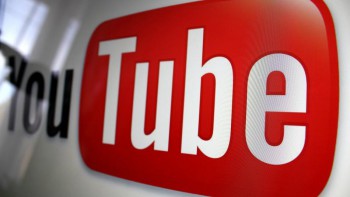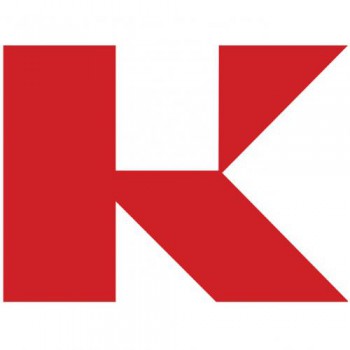The 3 Most Profitable DIY Revenue Streams & Why Many Artists Succeed at Only One of Them
Independent artists can make more money than ever before. The walls of major label distribution have crumbled, and have been down for a decade. Social networks make promotion to fans easier and cheaper. Add in home recording, crowd-sourced artwork, and other cost cutting maneuvers and DIY musicians can be financially successful.
Or so goes the myth.
Reality is far murkier. Yes, it is possible to make money as a DIY artist and many are doing it. However, they are not making it from selling recorded music. That can certainly bring in money, but even modestly successful DIY artists generally gross $20,000 to $50,000 from sound recordings annually. These are artists who have many songs in their catalog with some momentum. After you take into account recording costs and splitting revenue amongst band members and the producer, there’s not a lot left. Even those with a big enough fan base to do deluxe packages get a decent gross, but profits can be elusive.
Yet, DIY artists living below stardom are consistently finding profitable careers. How are they achieving this if iTunes and Spotify revenues aren’t paying the bills? The ones who are making a profit mostly fall into one of these three buckets:
1) YouTube
Complain all you want about musicians making YouTube covers and goofy videos instead of being “serious”. The reality is many of them make a good living from this. Costs are minimal compared to professional studio time. Distribution costs are near zero. The casualness of the content also allows for more rapid creation than one might find for “official” recorded work.
Companies such as Maker Studios and Big Fra.me have grown to help these artists monetize their music with better-leveraged ad rates, production assistance, and channel cross-promotion. Once ramped up with a lot of content, successful artists in this area can clear mid-to-high five figures in revenue. Since they are often solo artists, they also don’t have to split it up much.
2) Live Touring
It’s a rough life trudging from city to city, especially with gas over $3 a gallon. Yet many artists have figured out a way to make this work. The rise of house concerts has allowed some to make thousands per night when a club in town might have previously paid them hundreds.
Social networking has made promotion in new cities cheaper and easier to find the dozen “super fans” that might bring friends to a show. Smart artists also tour in areas where they know a fan base exists from mailing list and social network data points.
Once at the show, with an audience primed to like the band (instead of grumpy locals), these artists sell more merchandise. Easier access to creative items like sunglasses, jewelry, and handbags also leads to increased sales. Add this up, and musicians who aggressively work these approaches take in mid-to-high five figures in profit. As tough as touring can be, artists focused on this are clearly leveraging it into a career.
3) Sync Placements
The proliferation of cable channels and niche online audiences has meant more content and advertising that needs to be created professionally. This has also led to more needs for music around the world. Creators also can’t settle for mediocre library music. They need professional, contemporary songs that fit the mood of the creative.
Artists who fit the sound requirements and have a certain buzz amongst music supervisors are often rewarded with multiple placement opportunities for their music. Rates can be as lower than $100 (on sites like Audiosocket, The Music Bed, andCuesongs), but they can also be upwards of $100,000 for a worldwide television spot. Even after paying a placement company, an artist can still end up with a mid-to-high five figures in profit. This is also before they may get lucky with the “magic sync” that results in larger sales and popularity.
Bucket List
There are multiple examples of DIY artists who could fit into each of these buckets, but there are very few that were actually succeeding in multiple buckets.
YouTube artists don’t get enough road experience to draw well and their music lacks the “cred” music supervisors want. Touring artists mostly have “road” content to post on YouTube (which doesn’t perform as well), and they are in the studio less often to make tracks for sync placements. Meanwhile, sync artists tend to avoid YouTube for fear of diminishing their brand with covers, and don’t get much name recognition for their sync placements to draw on the road.
While success in multiple categories is elusive for most, success comes to those who focus on one revenue stream. By putting their energy in growing that one element, a musician quickly learns what works for that bucket. Then they refine their trade to fit the medium and achieve greater success. Laser-sharp vision allows them the financial resources to make a living at what they love.
The disadvantage is that this singular focus makes it difficult to get the career momentum most artists desire. Those that want to be rich and famous in music need to be succeeding on radio, the Internet, press, TV, and touring. For the DIY musician, much of that is cost prohibitive anyway, so a focus on what you can achieve makes smart business sense. However, it also explains why most major labels continue to dominate the biggest selling artists. Even when the artist comes from an indie, they usually have a partnership with a major label to generate success.
If you are truly DIY and don’t have a team, focusing on one area to succeed is a wise business plan. If you achieve a lot of success in that bucket, then you can evaluate how to grow on your terms. The new music business may look different, but it’s clear that a focus allows a greater chance towards DIY success.
—
Jay Frank (@Repojay) is the owner and CEO of DigSin and the author of “Futurehit.DNA” and “Hack Your Hit.” He was formerly the Senior VP of Music Strategy for CMT.
This is an essay by Jay Frank (DigSin) from Divergent Streams, a collection of essays edited by Kyle Bylin (@sidewinderfm) and written by influential executives, startup founders, and thinkers in the music industry. Download a free copy of the e-book here.
Source: MusicThinkTank




